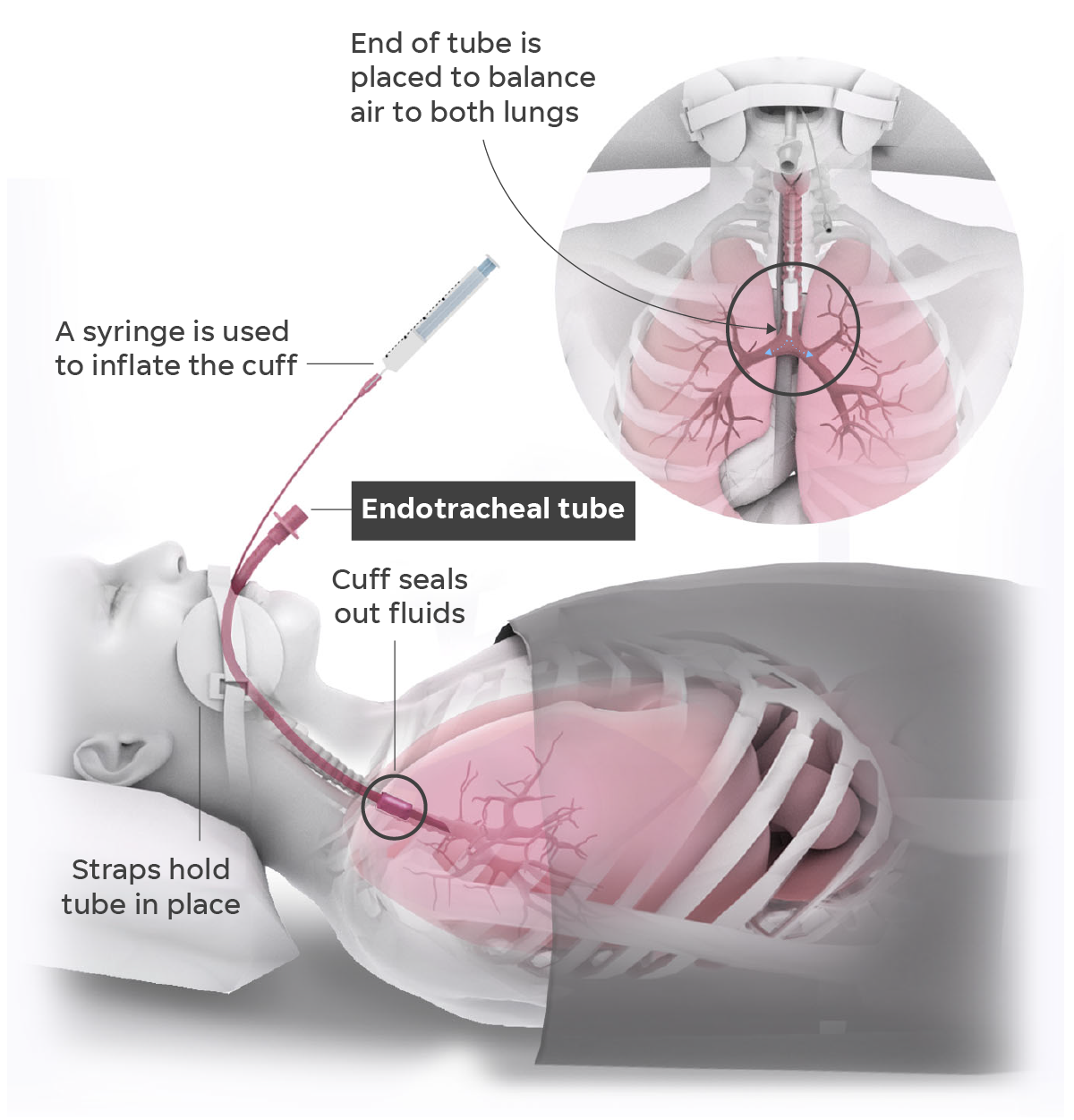It also puts healthcare workers at risk by exposing them to the virus. But the procedure isnt specific to the novel coronavirus.
 For Survivors Of Severe Covid 19 Beating The Virus Is Just The Beginning Science Aaas
For Survivors Of Severe Covid 19 Beating The Virus Is Just The Beginning Science Aaas
A ventilator can also damage the lungs either from too much pressure or excessive oxygen levels which can be toxic to the lungs.

How serious is being put on a ventilator. The ventilator is not fixing your lungs ICU doctor Brian Boer told Insider. The breathing rate will increase theyll look distressed the CO2 in the. The need to be intubated and placed on a ventilator is common with general anesthesia which means most surgeries will require this type of care.
The breathing tube in the airway can allow bacteria to enter the lungs which can lead to pneumonia. According to an NPR report the amount of lung inflammation the coronavirus is causing in some patients may make the pressure exerted by a ventilator dangerously excessive. He doesnt remember much else until coming off the ventilator four days later.
Although ventilators can be lifesaving they also carry some risks and side effects. Novel coronavirus patients who experience severe respiratory problems may need to be put on a ventilator to breathe. This also happens when the patient is too ill to breathe for themselves.
It is a life saving intervention measure. However like other treatments it can sometimes cause side effects. Many who go on a ventilator die and those who survive likely will face ongoing breathing problems caused by either the machine or the damage done by the virus.
Plus the tube makes it harder to cough away debris that could irritate your lungs. It can also make it difficult for them to cough and clear airways of irritants that can cause infections. The problem is that the longer.
Being put on a ventilator is considered a high-risk procedure due to the potential complications. A ventilator can save your life. Another risk from being on a ventilator is that the tube carrying air and extra oxygen to the lungs provides a pathway for dangerous germs.
Many dont remember the experience later. John called his wife who urged him to follow the doctors recommendation. While it is scary to consider being on a ventilator most surgery patients are breathing on their own within minutes of the end of surgery.
Infections including pneumonia and sinus infections. Your muscles wont move. Side Effects of Being on a Ventilator.
The bed n breakfast patients or the surgery patients who are brought into the ICU and put on ventilators as a precautionary measure is one of the best examples of this condition. Aside from the obvious not being able to get up or talk for extended periods of time being on the machine can increase your risk for lung infections because the tube that allows patients to. Atelectasis or a portion of the lung not fully inflating.
Most people who are put on a ventilator are on one because they will die without it. A patient who is on the ventilator prior to surgery will likely remain on the ventilator after surgery until they recover enough to breathe well on their own. This may happen due to trauma such as a life-threatening car accident infection or another problem.
Its been done for years in people who have serious medical conditionssuch as COPD. Patients are sedated and cant eat or speak. There are many situations where a patient recovers just fine and returns to normal after being removed from a ventilator.
Infection is one potential risk associated with being on a ventilator. Collapsed lung pneumothorax Vocal cord damage. To put that number in perspective that figure drops to about 36 for people put on ventilators for pneumonia influenza and other respiratory illnesses.
Before deciding to put a patient onto a ventilator Story says doctors are looking for signs of respiratory failure. Lack of movement fighting illness or injury and minimal nutrition ultimately takes a toll on the body rapidly. This is an extreme measure.
On the other hand there are a number of patients who do not return to normal and do not. Many ventilated patients get a. Many intubated patients do not survive and recent research suggests the odds worsen the older and sicker the patient.
This is more common if you use a ventilator for a long time. The breathing tube in your airway could let in bacteria that infect the tiny air sacs in the walls of your lungs. Being put on a ventilator means you will be sedated and restrained.
Risks of Being on a Ventilator Patients on ventilators run a higher risk of developing pneumonia because of bacteria that enters through the breathing tube. But although ventilators save lives a sobering reality has emerged during the COVID-19 pandemic.